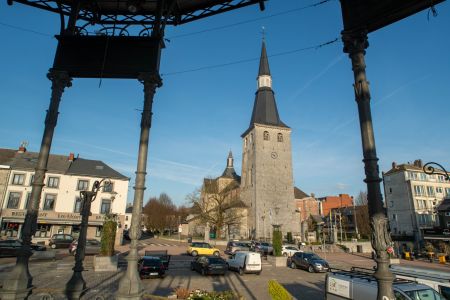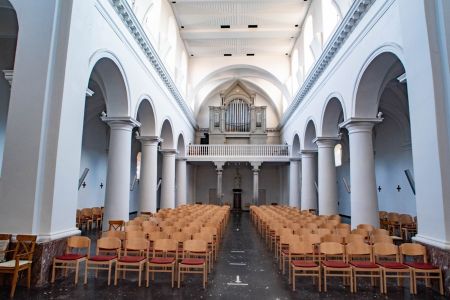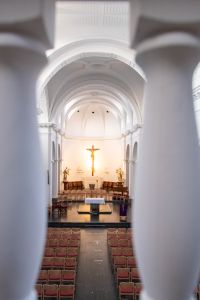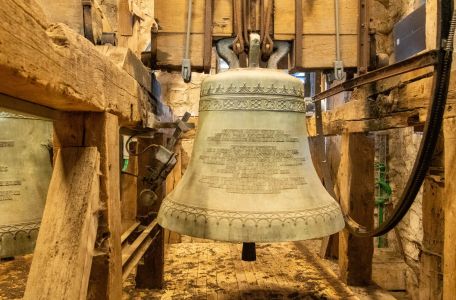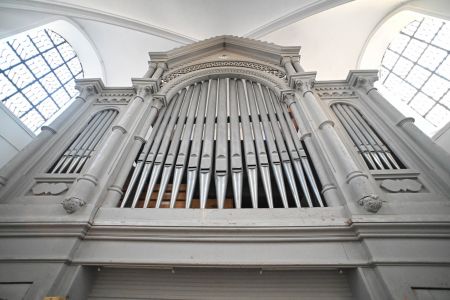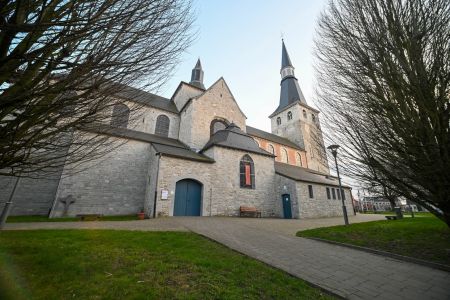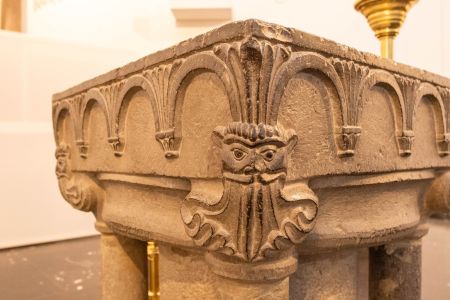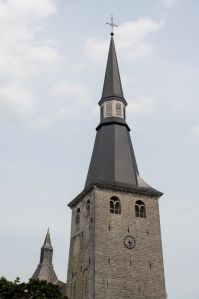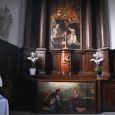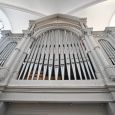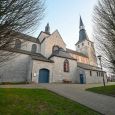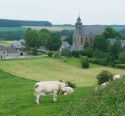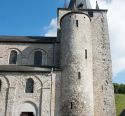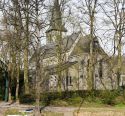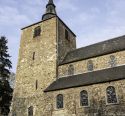Collegiate Church | XI-XII | Romanesque, Neoclassical | Catholic Church


Map
Opening hours
01 January - 31 December
Mon 10.00 - 17.00
Tue 10.00 - 17.00
Wed 10.00 - 17.00
Thu 10.00 - 17.00
Fri 10.00 - 17.00
Sat 10.00 - 17.00
Sun 10.00 - 17.00
Religious offices
Description
While the collegiate church is dedicated to Our Lady of the Assumption (a statuette of the saint in the niche with a wrought-iron grille on the tower), the parish church has Saint Nicholas as its patron saint, hence its name of Saint Nichola's church.
The building was built on the site of various shrines that were ravaged several times from the 12th century onwards and rebuilt each time. The present layout of the church dates from its reconstruction in 1618 after a complete destruction in 1613 following a hurricane. The general plan is that of the previous Romanesque church. The choir was extended by 6 cm in 1843 (as shown in the cartouche). The tower, crossing, choir and various annexes are made of limestone.
The tower is the oldest part of the building. It dates from the 11th century. Its wall on the Place Monseu side is 2.70 m thick. During excavations in 1975, a trench was dug to find the base of the foundations. The wall is 3.60 m thick and two cannonballs were found, which suggests that it may have originally been a defensive structure.
The three bells are called: Saviour, Nicholas and Mary.
On 16 May 2017, following the storm of 14 July 2010 which saw its spire fall onto the nave, the
the collegiate church finally got its famous spire back... the 7th in its eventful history!
KIKIRPA : Photo-library online
Photos
Remarkable elements
The choir
In the centre of the choir is the Great Cross of the Missions. On either side are the statues of the Virgin and Child and Joseph and Child. They are made of wood with abundant and lively draperies: characteristic of the school of the Liege sculptor Jean Del Cour (1627-1707). A recent expert report attributes them to his contemporary Arnold Hontoire (1650-1709).
A 12th century masterpiece was also discovered: the baptismal font. The basin is decorated at the corners with feline heads with a vegetal lower jaw (a motif of oriental origin) and on the perimeter of the bases in the form of capitals. The hammered copper dome is currently on deposit in the Namur diocesan museum.
The altarpiece of Saint Eloi
Saint Eloi is celebrated on 1 December and in Ciney. The Saint Eloi fair was one of the most important of the year. This 16th century altarpiece was in the Saint-Hubert Chapel until 1970, when it was moved for town planning reasons.
Three small sculpted panels depict "The Miracle of the Forge", "The Coronation" and "The Funeral" of the Saint. The two large panels represent "The Carrying of the Cross" and "The Deposition from the Cross". The central panel has disappeared and would have represented a Golgotha.
The Chapel of the Rosary
In this beautiful little chapel, the woodwork has been preserved as well as the altar and the altarpiece, donated by Miss Isabelle Dernelle (17th century) and which come from the former church of the Récollets. The confessional dates from 1665. The painting above the altar depicts the Virgin Mary giving the Rosary to Saint Dominic. There is also a wooden statue of St. Roch, who is invoked to cure contagious diseases.
In addition to its function as the Chapel of the Blessed Sacrament, this room is reserved for the confessors who take turns every day, hence its new name: Chapel of Reconciliation.
The statue of Saint Materne
Under the rood screen is the tomb of its donor, Canon Fontaine de Morimont, who died in 1634. Saint Materne was Bishop of Tongeren and Cologne in the 4th century, and according to tradition, he was the first apostle in the region. He is associated with the legend of the name of the town of Ciney and of the "five born", children (from the same litter) of Prince Clement and resurrected by Saint Materne following an accident "outside the walls of the town".
The great organs
The original construction dates from 1872 and is made by P. Schrijven. The console has three manuals and a pedalboard. The instrument was renovated in 1850 by the firm Dresse of Namur, who equipped it with electric drive while preserving its romantic character. Heavily damaged by the weather in 2010, it has just been restored and returned to its place on the rood screen.
It is also said that during the Second World War, the population registers were hidden in the pipes to prevent the enemy from seizing them.
The old tombstones
Thanks to the existence of the chapter of canons in the heart of Ciney, we have discovered some old tombstones. Some of them, located inside the Collegiate Church, were inserted outside, integrated into the façade of the new entrance porch built next to the left of the tower in 1835.
Around 1909, when the tower was being rebuilt, Léon Simon asked that the most beautiful tombstones be embedded in the walls of the old entrance porches. He continued this initiative during the First World War, employing unemployed people to clear the old cemetery surrounding the church, thus saving many family names from oblivion.


